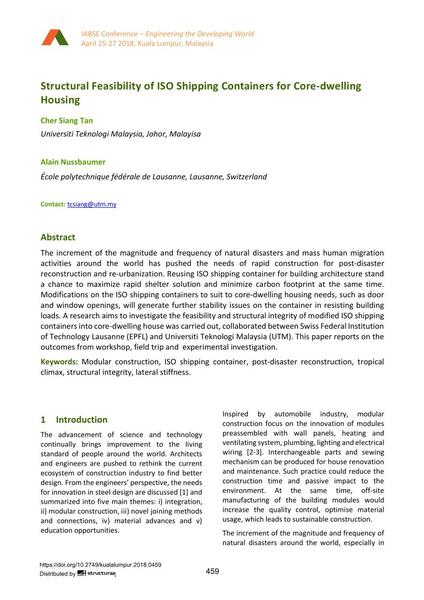Structural Feasibility of ISO Shipping Containers for Core-dwelling Housing

|
|
|||||||||||
Détails bibliographiques
| Auteur(s): |
Cher Siang Tan
(Universiti Teknologi Malaysia, Johor, Malayisa)
Alain Nussbaumer |
||||
|---|---|---|---|---|---|
| Médium: | papier de conférence | ||||
| Langue(s): | anglais | ||||
| Conférence: | IABSE Conference: Engineering the Developing World, Kuala Lumpur, Malaysia, 25-27 April 2018 | ||||
| Publié dans: | IABSE Conference Kuala Lumpur 2018 | ||||
|
|||||
| Page(s): | 459-465 | ||||
| Nombre total de pages (du PDF): | 7 | ||||
| DOI: | 10.2749/kualalumpur.2018.0459 | ||||
| Abstrait: |
The increment of the magnitude and frequency of natural disasters and mass human migration activities around the world has pushed the needs of rapid construction for post-disaster reconstruction and re-urbanization. Reusing ISO shipping container for building architecture stand a chance to maximize rapid shelter solution and minimize carbon footprint at the same time. Modifications on the ISO shipping containers to suit to core-dwelling housing needs, such as door and window openings, will generate further stability issues on the container in resisting building loads. A research aims to investigate the feasibility and structural integrity of modified ISO shipping containers into core-dwelling house was carried out, collaborated between Swiss Federal Institution of Technology Lausanne (EPFL) and Universiti Teknologi Malaysia (UTM). This paper reports on the outcomes from workshop, field trip and experimental investigation. |
||||
